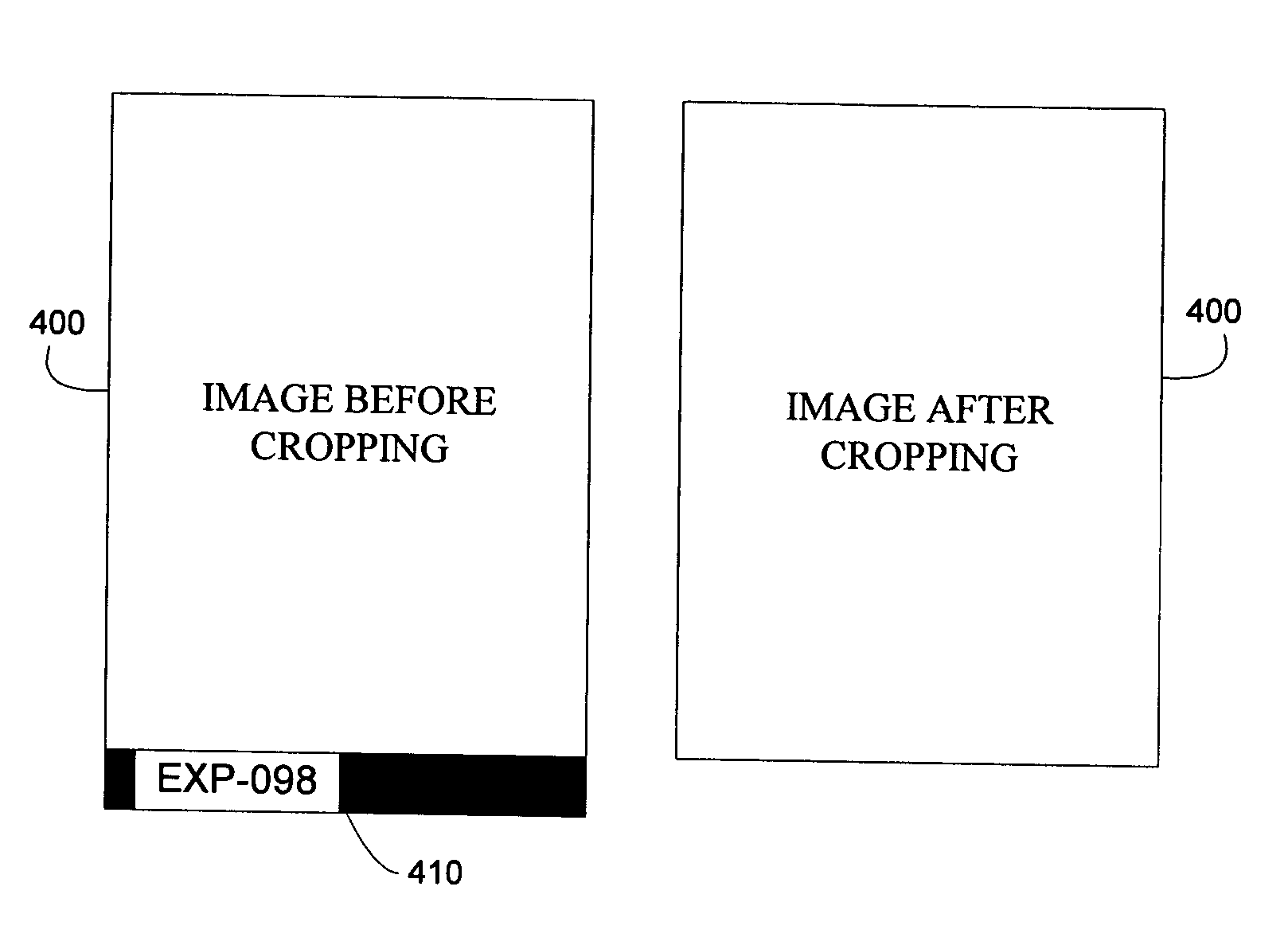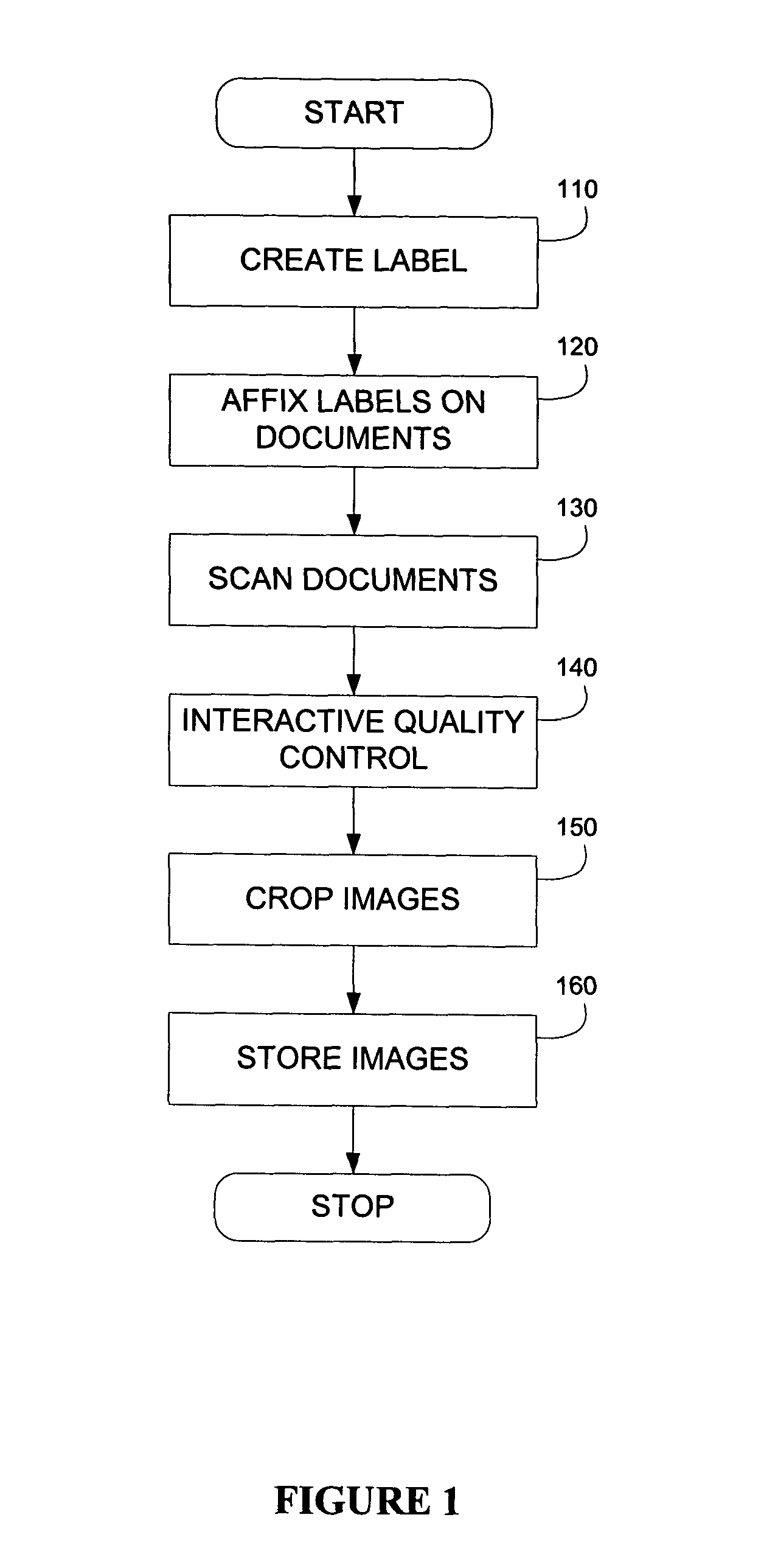Labeling system and methodology
a labeling system and label technology, applied in the field of document imaging and processing, can solve the problems of large physical space, pages can easily be lost or misplaced, and many businesses cannot leverage these capabilities, and achieve the effect of high level of document integrity assuran
- Summary
- Abstract
- Description
- Claims
- Application Information
AI Technical Summary
Benefits of technology
Problems solved by technology
Method used
Image
Examples
Embodiment Construction
[0024] The present invention for document imaging and management is now described. The present invention comprises a system for document imaging and labeling as well as a process therefor. In the description that follows, numerous specific details are set forth for the purposes of explanation. It will, however, be understood by one of skill in the art that the invention is not limited thereto and that the invention can be practiced without such specific details and / or substitutes therefor. The present invention is limited only by the appended claims and may include various other embodiments which are not particularly described herein but which remain within the scope and spirit of the present invention.
[0025]FIG. 1 is a flowchart illustrating the labeling and scanning process of the present invention according to a preferred embodiment thereof. As shown in FIG. 1, the first step is the creation of a label 110. A preferred embodiment of the label which is used in connection with the...
PUM
 Login to View More
Login to View More Abstract
Description
Claims
Application Information
 Login to View More
Login to View More - R&D
- Intellectual Property
- Life Sciences
- Materials
- Tech Scout
- Unparalleled Data Quality
- Higher Quality Content
- 60% Fewer Hallucinations
Browse by: Latest US Patents, China's latest patents, Technical Efficacy Thesaurus, Application Domain, Technology Topic, Popular Technical Reports.
© 2025 PatSnap. All rights reserved.Legal|Privacy policy|Modern Slavery Act Transparency Statement|Sitemap|About US| Contact US: help@patsnap.com



